Baren
バレン
Baren
CATEGORIES
The baren is a burnishing tool that printmakers use to transfer an image on a printing block to paper. The printmaker applies pressure with the baren to burnish paper placed on a printing block so that the paper picks up ink from the block.
The baren is believed to have originally come from China in ancient times. Printmakers improved the baren in Japan and have been using the tool for many generations. There are several types of baren available commercially today. A baren consists of an ategawa, a core, and a bamboo skin. The hon-baren is the most typical type of baren. It has an ategawa comprising some twenty or thirty sheets of washi bonded together and lacquered, a core of finely split bamboo skin that is twisted together into a flat coil, and a long-jointed bamboo skin to wrap the ategawa and core together. The core of the hon-baren consists of what are called konai, which are fashioned out of four bamboo skins that are split, twisted, and woven together. Two konai woven together are a chūnai, and two chūnai form a yakko, which is the common configuration for a baren core. Cores made of finely split bamboo skins are called hososhin, which are suitable for burnishing delicately cut prints, while those made of coarsely split bamboo skins are called futoshin, which are best used for large prints or “beta-ban” blank blocks.
Another type of baren wrapped in bamboo skin is the daiyō-baren. Daiyō-baren have cores made of polyester, nylon, paper string, cotton, or cardboard and have plastic, plywood, or cardboard ategawa. Before using a hon-baren or daiyō-baren, use a felt pad to apply some camellia oil to the bamboo skin. This improves lubrication when burnishing the washi print. To properly burnish a print, first loop your fingers around the connecting part of the bamboo skin, grip it firmly with your palm, and press down firmly with your thumb. Begin burnishing in small, delicate movements over the entire area of the print to keep the paper in place. Take care not to tilt the baren during this process and also try to apply pressure evenly, exerting force with the bulge of your palm. Bamboo skins wear over time, so replace the bamboo skin if holes begin to form along the uneven parts of the core.
In addition to bamboo-wrapped baren, there are baren with ball bearings, octagonal wire mesh-core baren, and plastic disk baren.
Baren are available for purchase at art supply stores that carry block print materials.
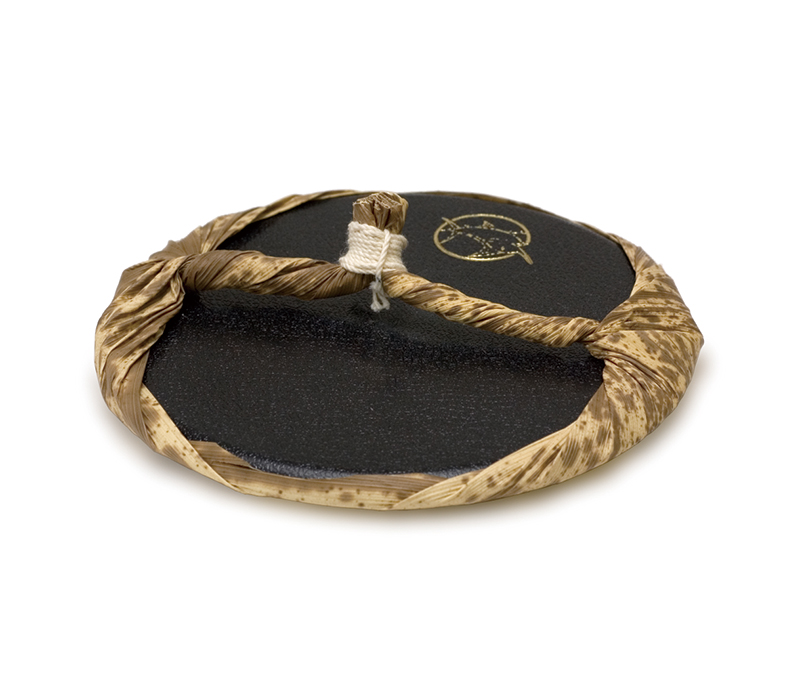
 The structure of a hon-baren
The structure of a hon-baren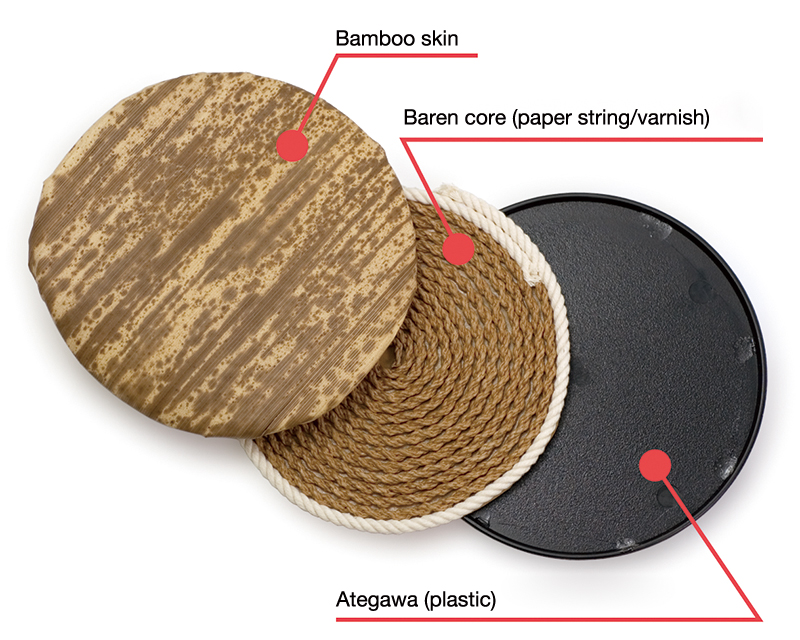 The structure of a common daiyō-baren
The structure of a common daiyō-baren- Baren types
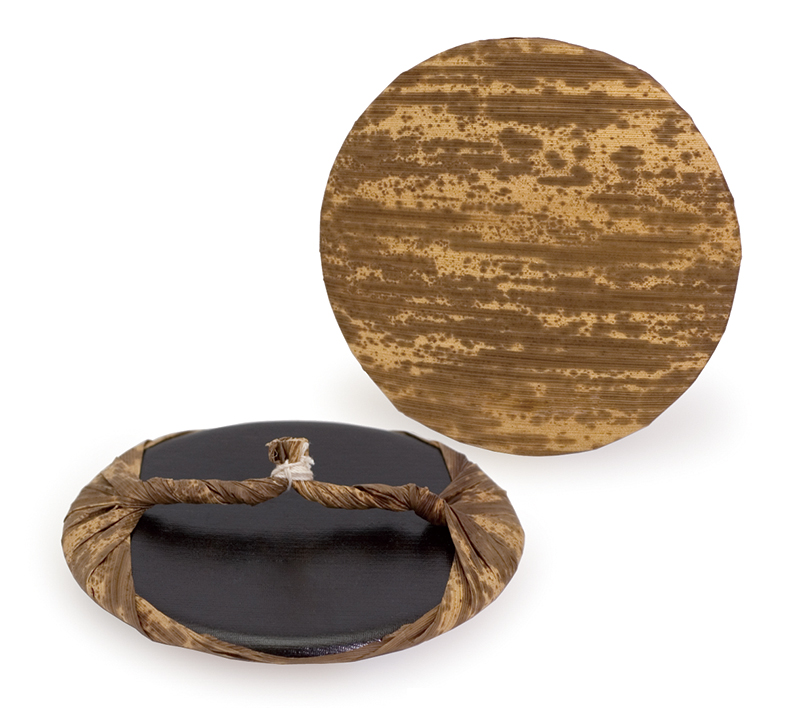 Hon-baren
Hon-baren 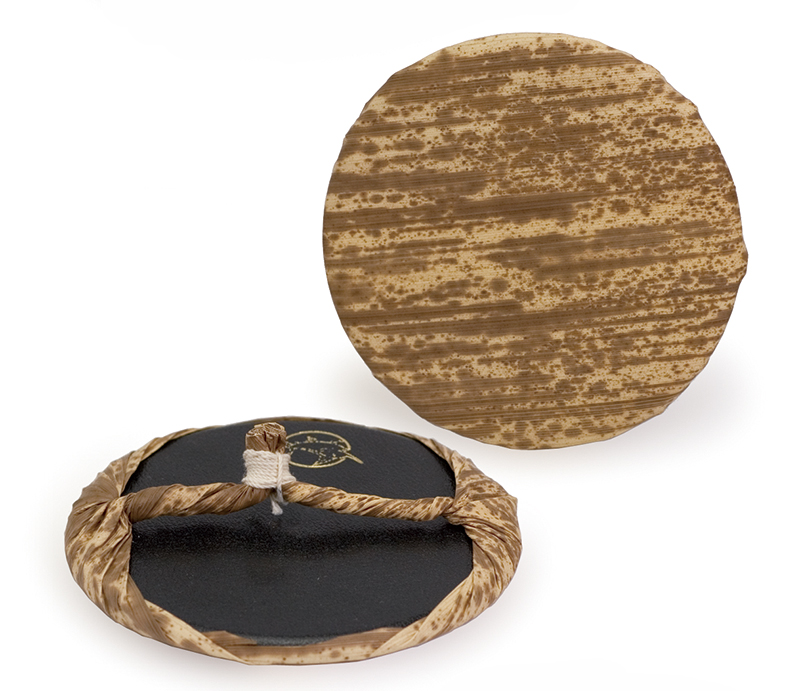 Daiyō-baren
Daiyō-baren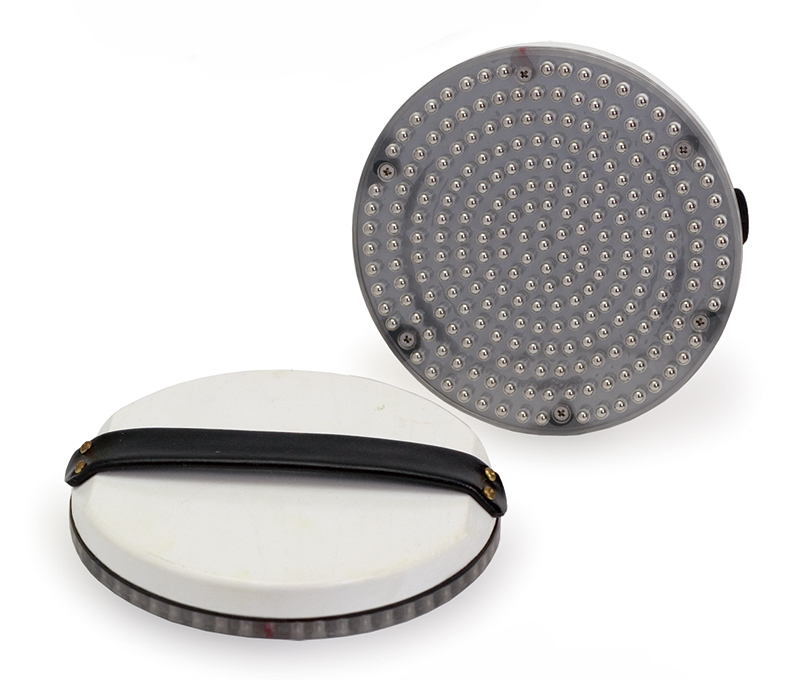 Ball bearing baren
Ball bearing baren Ball bearing baren
Ball bearing baren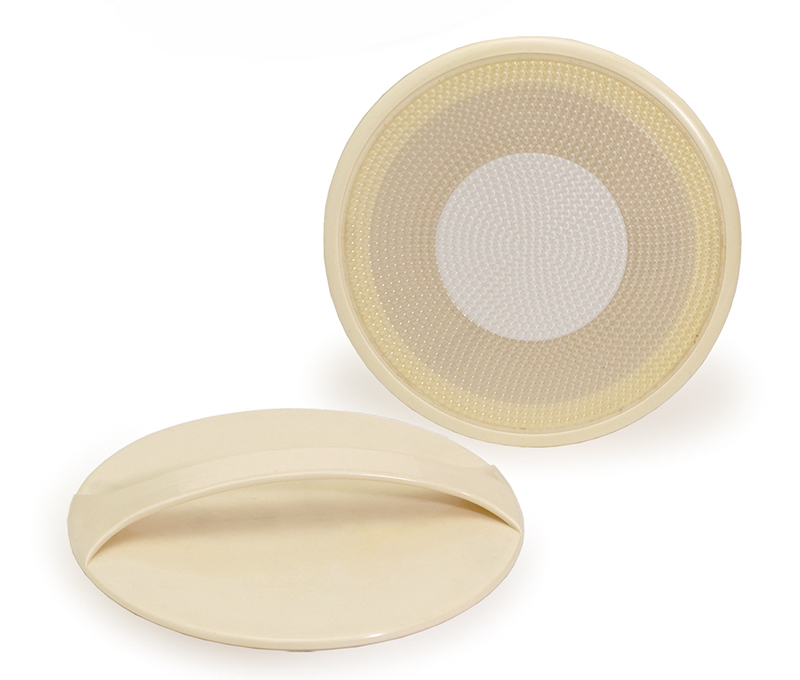 Disk baren
Disk baren How to hold a baren
How to hold a baren Camellia oil (L) and a baren pad (R)
Camellia oil (L) and a baren pad (R)
